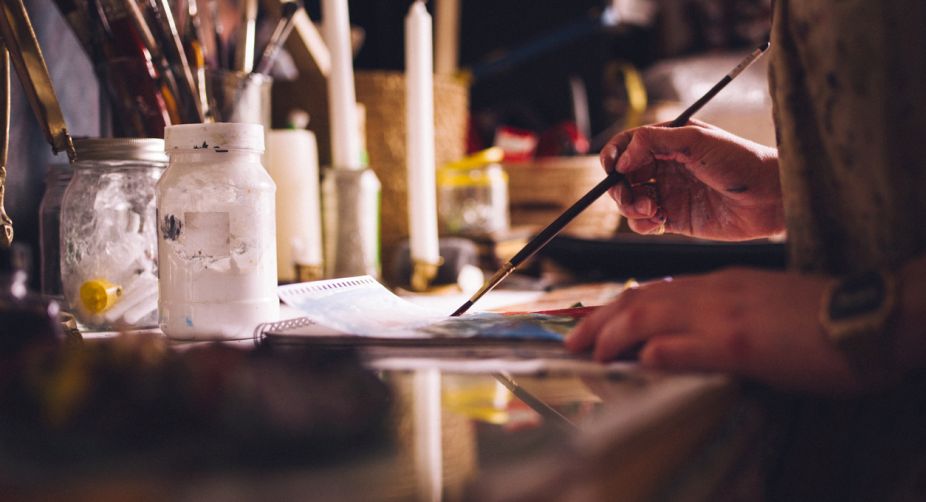Korean contemporary art graces India Art Fair 2025
With the growing influence of Korean culture in India, people thronged to the Korean Cultural Centre’s exhibition booth at the India Art Fair 2025 here.
A self-taught artist, Ruchi Singhal has honed her craft towards seeking to coin her own visual vocabulary. A review of Mapping Nature’s Notes.

(Getty Images)
An artist paints way beyond what may be visible to the eye. A language of the mind, and of the spirit, one for lending expression to perceptions and sensations way beyond the tangible, art captures things felt and imagined, transient and ephemeral, dewdrops of a moment, altered in the next, like shifting clouds in a domain of their own.
Ruchi Singhal, a medical doctor by profession, says she cannot remember a time when she was not painting, and knows not when those childish endeavours turned into a serious passion.
Advertisement
Self-taught is a very literal term for defining Ruchi vis-à- vis her art, so much has she laboured over learning the craft, even as she revelled in the expression.
Advertisement
“It is almost more difficult than being a doctor,” she had sighed once, “it takes so much of you ~ leaves you drained!” I quite like the comparison! Those were days when Ruchi was still exploring a range of subjects to give vent to her art, even while she honed her craft towards seeking to coin her own visual vocabulary. Back then, too, she was putting her all into process and pursuit. That was a few short years ago; in the meantime Ruchi has been consistently practising her art, showing at regular intervals. Step by step she has overcome her uncertainties and infirmities, if one may term them so, and finally emerged sure and confident.
With Mapping Nature’s Notes, her recent show at Visual Arts, IHC, Ruchi has risen like a full moon against a cloud-smeared sky, incorporating almost all its textures.
Ruchi has now gained full control over tone, texture and composition, almost a past master at juxtaposing contrasting textures, weaving magic and poetry on her picture palette uniquely her own.
With a penchant for the grand and the decorative, Ruchi’s canvasses are alive with the hide and seek of 24 carat gold, and silver leaf, interspersed with acrylic paint and mixed media, vesting the regality upon nature that is truly its own. The textures she weaves on her canvass are multi-layered and complex, leaving one amazed at the dexterity and visualisation behind such intricate compositions.
Under no compulsion to reach abstraction from a given set of physical realities, Ruchi indulges herself to paint what she feels and how she sees. Outpours like Miracle Mist, Golden Mist, Autumn Gold and others manifest a personalised idiom incorporating myth and reality in a seamless embrace.
In the Man and Nature series Connect I and II come as visual poetry with an unblemished syntax, recalling the classics in their treatment of form, exude an aura of breaking the mould by way of handling paint to create the surface. Golden Forest and associated works are akin to a dream sequence, as is Dancing in the Rain a capable achievement in play of form.
Ruchi’s strong human forms are at times overstatements in the sheer strength of articulation and could recede a tad, as could her lotus petals in Blossoms Born etc. mitigate their snaky mane, in keeping with the delightfully natural elements that make up the rest of the paintings.
Advertisement